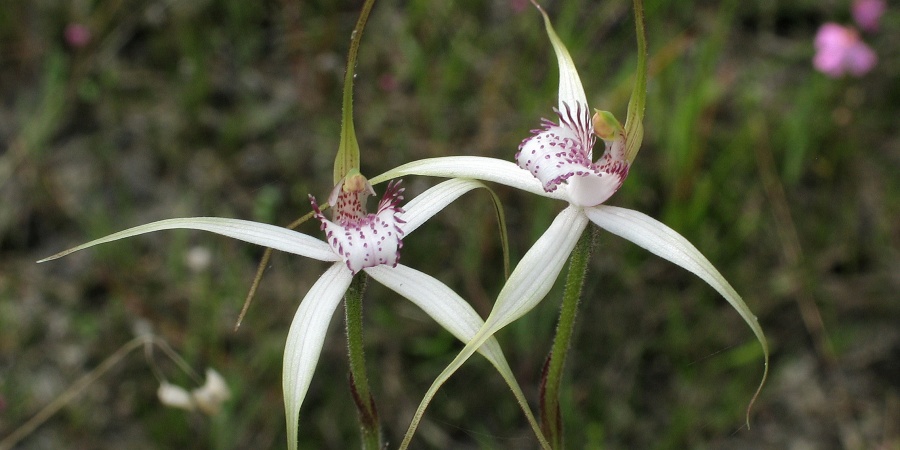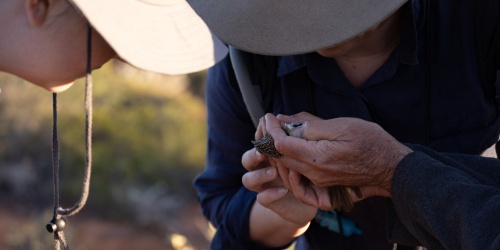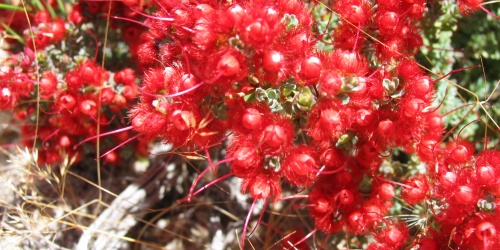
Close up of two white orchids Photo. Andrew Brown
The department’s approach to conserving threatened species and threatened ecological communities balances landscape-scale management with targeted conservation actions that are primarily focussed within the conservation reserve system. In addition, management of biodiversity off-reserve and ex-situ conservation actions are essential to achieving successful biodiversity conservation outcomes for threatened and non-threatened species and ecological communities. The department works in partnership with, and recognises the contributions of, Aboriginal Traditional Owners, individual landholders, State and local government authorities, land managers, community groups and other stakeholders to achieve off-reserve conservation outcomes.
There are key principles used to guide prioritisation of conservation actions undertaken by the department, recognising that many actions are undertaken at a regional level, and that different regions have diverse suites of species and different threats to manage. Conservation of Western Australia’s native species, ecological communities and habitats that support them, is a long-term task that relies on scientifically informed management actions to achieve the best possible outcomes.
Maintain populations in the wild
Conserve wild, self-sustaining, genetically diverse populations, with particular focus on threatened species and threatened ecological communities.
Manage threats
Mitigate threats to wild populations through co-ordinated management interventions that acknowledge ecological interactions and promote resilience to changing climates.
Efficiency and effectiveness
Management actions are most efficient and effective when they provide benefits for multiple species by addressing one or more threats at the largest scale possible or in multiple areas simultaneously.
Priorities for conservation
Priorities for management will be determined based on conservation status, contribution to ecosystem function, feasibility and likelihood of success, iconic status, stakeholder interest and community values, and within a regional context.
Action informed by science
On-ground recovery and management actions will be based on scientific evidence, supported by considerations of cost effectiveness and likelihood of success, and undertaken in an adaptive management context that responds to changing circumstances, and incorporates innovation, while learning from past experiences.
Secure populations
Support wild populations by augmentation, establish new wild populations, and establish secure populations through translocation.
Captive breeding/ex situ conservation
Facilitate captive breeding if required for species where wild populations require further support to maintain viable populations or to establish new populations. Maintain seed collections in a seed bank if necessary, and establish orchards to provide seed to support existing or establish new populations for species where the existing natural population size is too small to maintain reproductive output.
Conservation reserves
Management actions that support species and their habitats within the conservation reserve system will be a priority, followed by highly threatened species and their habitats on other tenure.
Work in partnership
Conservation programs will be undertaken in partnership with other conservation organisations, researchers, community groups, Aboriginal people, local communities and other land managers.

